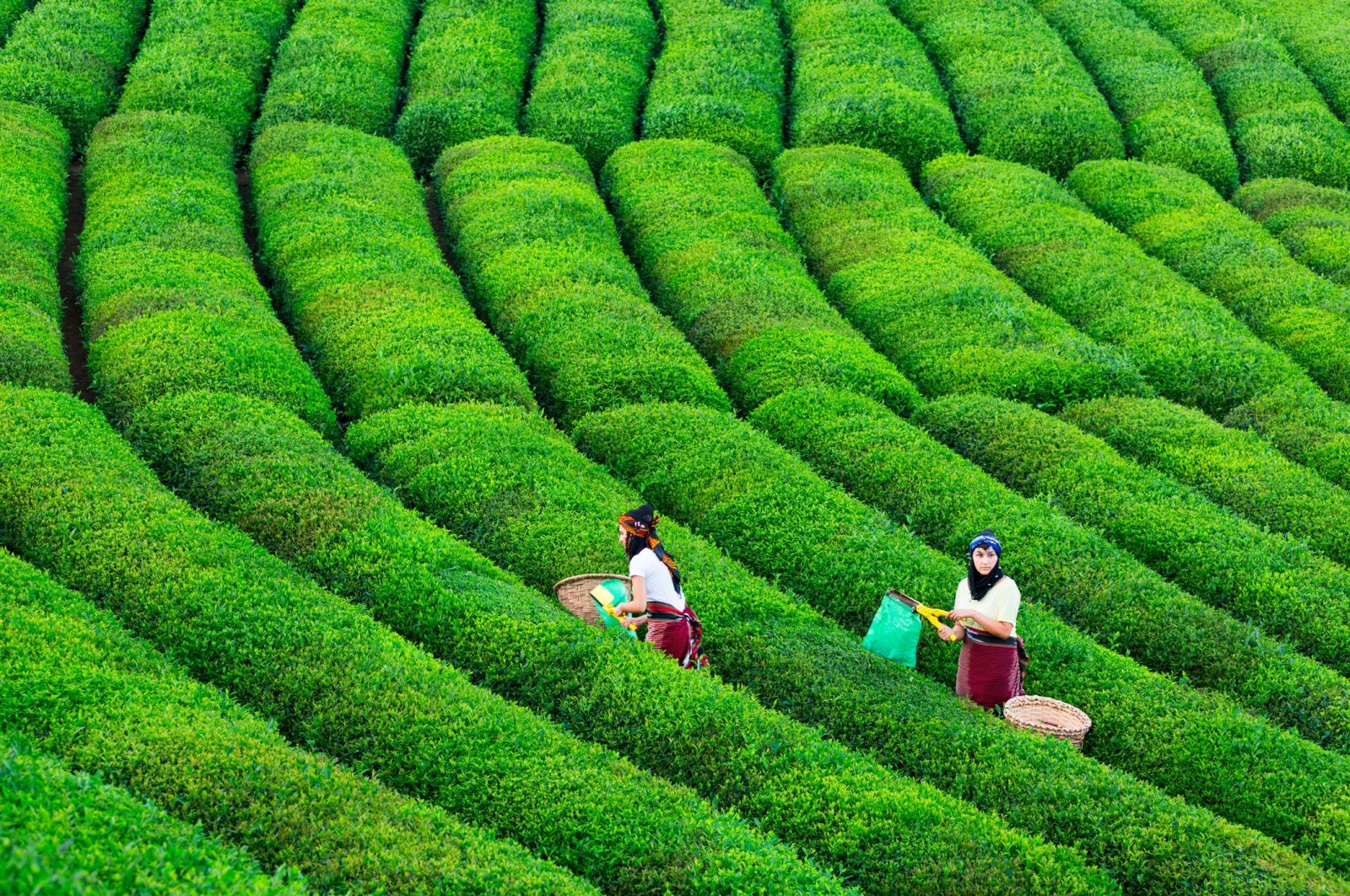Turkish tea reaches 112 countries in first half of 2024
Tea, one of Türkiye’s important agricultural products, was exported to 112 countries, primarily in Europe, during the first six months of 2024.
According to data compiled by Anadolu Agency (AA) from the Eastern Black Sea Exporters’ Association (DKİB), Türkiye exported 2,898 tons of tea from January to June, generating revenue of $13,914,532.
Belgium, the United Kingdom, and the U.S. were the top three destinations for Turkish tea exports.
In the first half of the year, Türkiye exported tea worth $5,246,512 to Belgium, $1,878,642 to the United Kingdom and $1,009,991 to the U.S.
Unlike the same period last year, tea was also exported to the United Arab Emirates (Dubai), Mauritania, Tunisia, Egypt, South Sudan, Cuba, Burundi, the Central African Republic, Namibia, Sao Tome and Principe, Venezuela, Equatorial Guinea, Czechia, Burkina Faso, Djibouti, Cambodia, and Slovenia.
Rize boasts 49% of exports
In the first half of the year, 1,870 tons of tea, or 49% of the country’s tea exports, were from Rize, generating revenue of $6,850,514 from 24 countries.
Belgium, the U.S. and the Turkish Republic of Northern Cyprus (TRNC) were the top three destinations for tea exports from Rize. During this period, tea worth $5,169,765 was exported to Belgium, $599,795 to the U.S. and $209,830 to the TRNC.
This year, tea was also exported to France, Singapore, Qatar, the People’s Republic of China and Bahrain, which were not among the destinations in the same period last year.
Saffet Kalyoncu, chairperson of the DKİB, told AA that the trend of increasing tea exports continues.
Kalyoncu mentioned that tea exports have started the year well and expressed hope that 2024 will close with an increase in exports.
He also emphasized the need for significant efforts to boost tea exports: “Firstly, addressing the issue of global warming, which is one of the biggest risks in agriculture, is crucial for increasing yield and quality in the crops. This involves starting with improving yield per unit, developing innovative products tailored to each country’s taste and consumer habits, and focusing on R&D and innovation.”
Kalyoncu also pointed out the need to support all tea manufacturing companies in the SME category, saying: “We believe that by improving yield and quality in the gardens, our tea exports will reach much higher figures and we will become a significant player in the global market.”
Known for its crimson hue, Turkish tea, referred to as “çay” in Turkish and pronounced “chai,” is black tea prepared without milk. It is served in small glass cups with a saucer, a small spoon and one or two sugar cubes.
Served literally everywhere in the country, the tea itself is prepared using two teapots stacked on top of each other, known as a “çaydanlık,” where the bottom kettle holds boiling water and the top kettle holds the tea brew with loose tea leaves. Brewing the tea this way allows each person to choose how strong his or her tea is by diluting the strong tea on top with the hot water below.



